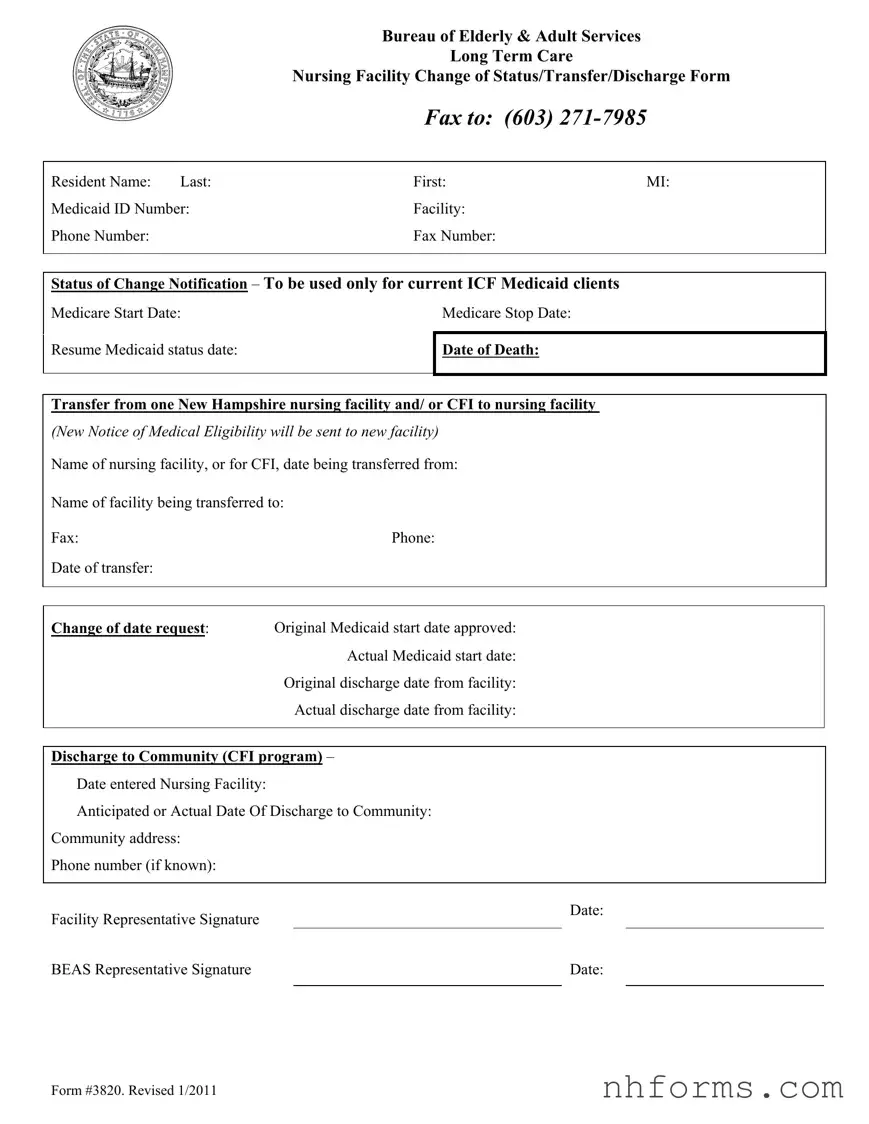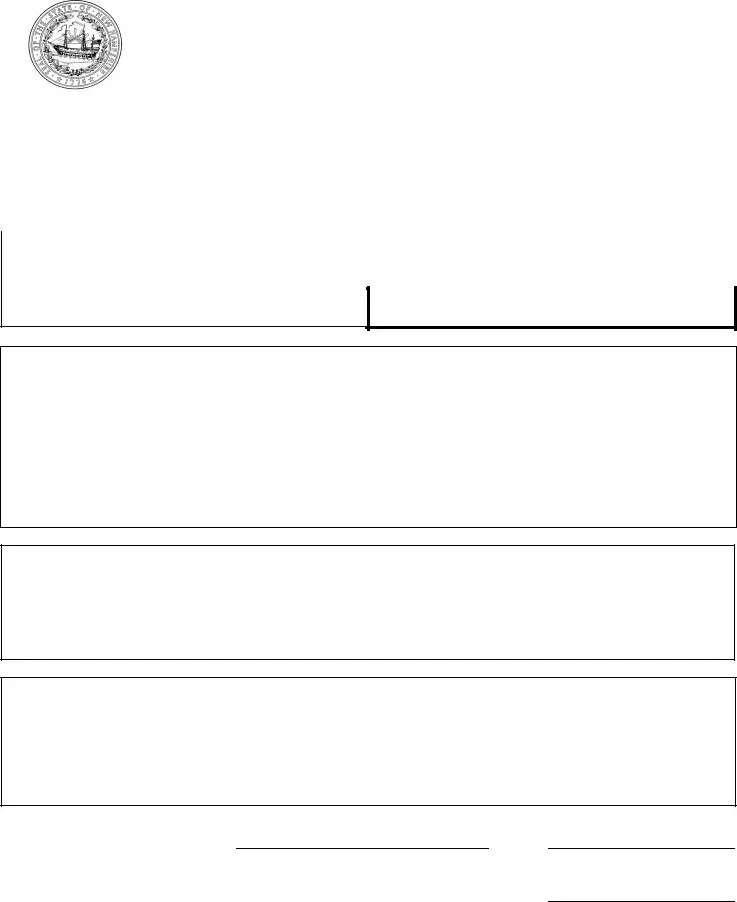What is the New Hampshire 3820 form?
The New Hampshire 3820 form is a document used by the Bureau of Elderly & Adult Services to report a change of status, transfer, or discharge of a resident from a long-term care nursing facility. This form facilitates communication about Medicaid clients within the Integrated Care Facilities (ICF) and is essential for ensuring that Medicaid services follow the resident accurately and timely.
Who needs to fill out and submit this form?
The form is typically filled out by a representative of the nursing facility where the resident is located. It's their responsibility to report changes such as the beginning or end of a Medicare period, transfers between facilities, and discharges to the community, among other changes in the status of a Medicaid resident within New Hampshire.
How do you submit the 3820 form?
The completed form should be faxed to the Bureau of Elderly & Adult Services at (603) 271-7985. It’s important for the facility representative to ensure that all information is accurate and up to date before submission to prevent any delays in the resident's care or administrative confusion.
What information is required on the 3820 form?
You'll need to provide detailed information about the resident, including their name, Medicaid ID number, and the facility's contact info. Additionally, details about the specific status change such as Medicare start and stop dates, dates concerning transfers or discharges, and signatures from both the facility and BEAS representatives are necessary. This comprehensive data supports the effective management of a resident's care plan and Medicaid status.
When should the 3820 form be used?
It should be used whenever there's a need to notify the Bureau of Elderly & Adult Services about any change in the Medicaid status of a resident in a long-term care facility. This includes when a resident's Medicare coverage starts or stops, when they're transferred from one facility to another, or when they are discharged, either back to the community or due to passing away.
What happens after you submit the form?
After submitting the form, the Bureau of Elderly & Adult Services will process the information and make any necessary updates to the resident's Medicaid status. If the form reports a transfer, a new Notice of Medical Eligibility will be sent to the new facility. Submitting the form promptly helps ensure continuous Medicaid coverage and proper care coordination for the resident.
Is there a deadline for submitting the 3820 form?
While there's no specific deadline mentioned, it's crucial to submit the form as soon as possible after the change occurs. Prompt submission helps prevent any potential interruption in the resident's Medicaid coverage or care coordination.
Can the form be submitted for a resident not on Medicaid?
No, the 3820 form is specifically designed for reporting changes in the status of current Medicaid clients residing in long-term care nursing facilities. If the resident is not on Medicaid, this form would not be applicable for their situation.

